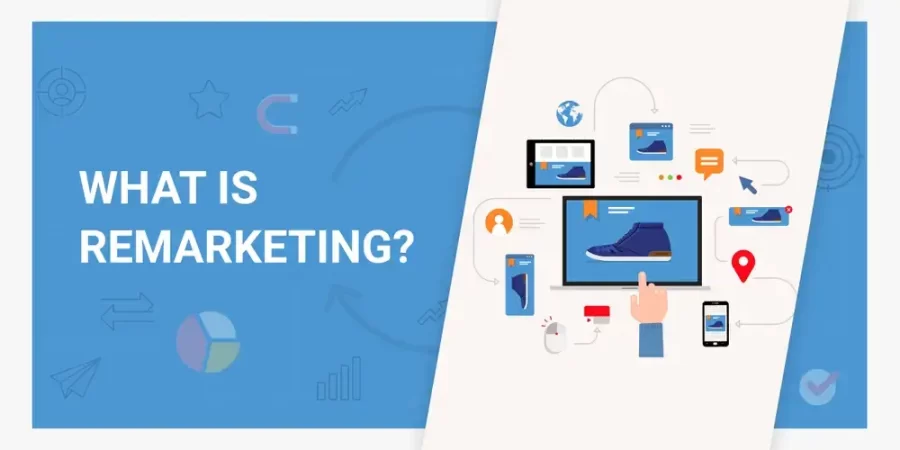Beginners Guide: How Can I Use Remarketing To Target Ads To Specific Groups Of People?
Remarketing is a powerful tool that allows businesses to target specific groups of people with personalized ads. By identifying and tracking website visitors, businesses can create targeted ads that are more likely to be clicked on and convert into sales.
There are several different ways to use remarketing to target specific groups of people. The first step is to set up a remarketing campaign through a platform like Google Ads or Facebook Ads. This will allow you to track website visitors and create targeted ads based on their behavior and demographics.
One way to target specific groups of people is to use demographic targeting. This is where you can target ads to specific age groups, genders, and other demographic information. For example, if you are a clothing store that sells trendy clothing for teenagers, you could target your ads to people aged 13-17. This will increase the chances that the ad will be seen by people who are interested in the products you sell.
Another way to target specific groups of people is to use behavior targeting. This is where you can target ads based on the actions people take on your website. For example, if someone visits your website but doesn’t make a purchase, you could target them with an ad offering a special discount or free shipping. This will encourage them to come back to your website and make a purchase.
A third way to target specific groups of people is to use interest targeting. This is where you can target ads based on the interests of your website visitors. For example, if you sell outdoor gear, you could target your ads to people who have shown an interest in outdoor activities, such as hiking, camping, and fishing. This will increase the chances that the ad will be seen by people who are interested in the products you sell.
You can also use remarketing to target specific groups of people based on their location. This is particularly useful for businesses that have multiple locations or that want to focus on a specific geographic area. For example, if you are a restaurant that serves sushi, you could target your ads to people who live in a specific area where sushi is popular.
Another way to use remarketing is to target specific groups of people based on their past purchases. This is particularly useful for businesses that sell multiple products or services. For example, if you are a clothing store that sells both casual and formal clothing, you could target your ads to people who have previously purchased formal clothing, encouraging them to purchase more formal clothing.
Remarketing can also be used to target specific groups of people based on their engagement with your business. For example, if you have a loyalty program, you could target your ads to people who have been members for a long time or who have a high number of points. This will encourage them to continue to engage with your business.
Remarketing can also be used to target specific groups of people based on their past interactions with your business. For example, if you sell tickets to events, you could target your ads to people who have previously purchased tickets to similar events. This will increase the chances that they will purchase tickets to your event.
Remarketing is a powerful tool that allows businesses to target specific groups of people with personalized ads. By identifying and tracking website visitors, businesses can create targeted ads that are more likely to be clicked on and convert into sales. There are several different ways to use remarketing, including demographic targeting, behavior targeting, interest targeting, location targeting, past purchase targeting, engagement targeting, and past interactions targeting. By using a combination of these targeting strategies, businesses can create highly effective remarketing campaigns that will help them increase sales and grow their business.
Remarketing is a powerful marketing strategy that can help businesses to target specific groups of people with highly personalized ads. By identifying and tracking website visitors, businesses can create targeted ads that are more likely to be clicked on and convert into sales. Here are some examples of how businesses can use remarketing to target specific groups of people:
- Demographic targeting: This is where businesses can target ads to specific age groups, genders, and other demographic information. For example, a cosmetic company that sells anti-aging products can target their ads to people aged 40 and above. This will increase the chances that the ad will be seen by people who are interested in the products the company sells.
- Behavior targeting: This is where businesses can target ads based on the actions people take on their website. For example, a travel agency can target people who have visited their website but haven’t made a booking with an ad offering a special discount for their first booking. This will encourage them to come back to the website and make a booking.
- Interest targeting: This is where businesses can target ads based on the interests of their website visitors. For example, a fitness equipment company can target their ads to people who have shown an interest in fitness and workout by visiting fitness related websites.
- Location targeting: This is particularly useful for businesses that have multiple locations or that want to focus on a specific geographic area. For example, a local pizzeria can target their ads to people living within 5 miles of the restaurant.
- Past purchase targeting: This is particularly useful for businesses that sell multiple products or services. For example, a clothing store that sells both casual and formal clothing can target their ads to people who have previously purchased formal clothing, encouraging them to purchase more formal clothing.
- Engagement targeting: This is useful for businesses that have a loyalty program or engagement program. For example, a coffee shop can target their ads to people who have been members for a long time or who have a high number of points. This will encourage them to continue to engage with the business.
- Past interactions targeting: This is useful for businesses that sell tickets to events, for example, a concert venue can target their ads to people who have previously purchased tickets to similar events. This will increase the chances that they will purchase tickets to upcoming events.
Here are some bullet points to help you learn remarketing to target ads for success:
- Remarketing is a powerful marketing strategy that allows businesses to target specific groups of people with personalized ads by identifying and tracking website visitors.
- Demographic targeting: Targeting ads to specific age groups, genders, and other demographic information. For example, an anti-aging cosmetic company can target their ads to people aged 40 and above.
- Behavior targeting: Targeting ads based on the actions people take on the website. For example, a travel agency can target people who have visited their website but haven’t made a booking with an ad offering a special discount for their first booking.
- Interest targeting: Targeting ads based on the interests of website visitors. For example, a fitness equipment company can target their ads to people who have shown an interest in fitness and workout by visiting fitness related websites.
- Location targeting: Targeting ads to specific geographic area, particularly useful for businesses that have multiple locations. For example, a local pizzeria can target their ads to people living within 5 miles of the restaurant.
- Past purchase targeting: Targeting ads based on the past purchase of customers, particularly useful for businesses that sell multiple products or services. For example, a clothing store can target their ads to people who have previously purchased formal clothing, encouraging them to purchase more formal clothing.
- Engagement targeting: Targeting ads based on the engagement of customers with the business, particularly useful for businesses that have a loyalty program. For example, a coffee shop can target their ads to people who have been members for a long time or who have a high number of points.
- Past interactions targeting: Targeting ads based on the past interactions of customers with the business. For example, a concert venue can target their ads to people who have previously purchased tickets to similar events.
- By using a combination of these targeting strategies, businesses can create highly effective remarketing campaigns that will help them increase sales and grow their business.
- Remarketing can be set up through platform like Google Ads or Facebook Ads.
- One of the key benefits of remarketing is that it allows businesses to reach out to people who have already shown an interest in their products or services. These people are more likely to be in the market for what the business has to offer, making them a prime target for advertising.
- Remarketing also allows businesses to create highly personalized ads that are tailored to the specific interests and behaviors of their target audience. This increases the chances that the ad will be relevant and useful to the person viewing it, making them more likely to take action.
- Another benefit of remarketing is that it can help to increase brand awareness. By reaching out to people who have previously interacted with a business, remarketing can help to remind them of the brand and encourage them to return to the website or make a purchase.
- Remarketing can also be used to up-sell or cross-sell products or services. For example, if a customer has previously purchased a product from a business, the business can target them with ads for related products that they may be interested in.
- One of the best ways to use remarketing is to create a series of ads that are designed to nurture leads and guide them through the sales funnel. By targeting people at different stages of the funnel, businesses can help to move them closer to a purchase decision.
- By using remarketing in combination with other marketing strategies, such as email marketing and social media marketing, businesses can create a multi-channel approach that increases the chances of reaching their target audience.
- To get the most out of remarketing, it’s important to regularly analyze the performance of ads and make adjustments as needed. This can help to optimize ad performance and ensure that the right message is reaching the right people at the right time.
- Remarketing is not only limited to online businesses, offline businesses can also take advantage of remarketing by using tools such as loyalty programs or email marketing.
- It’s important to comply with data privacy regulations such as GDPR or CCPA when using remarketing, businesses should ensure that they have the necessary permissions to collect and use personal data for remarketing purposes.
In conclusion, remarketing is a powerful marketing strategy that allows businesses to reach out to people who have already shown an interest in their products or services. It allows for highly personalized ads that are tailored to the specific interests and behaviors of their target audience and can help to increase brand awareness and sales. By using remarketing in combination with other marketing strategies and regularly analyzing ad performance, businesses can optimize their remarketing efforts and achieve their marketing goals.





Leave a Reply